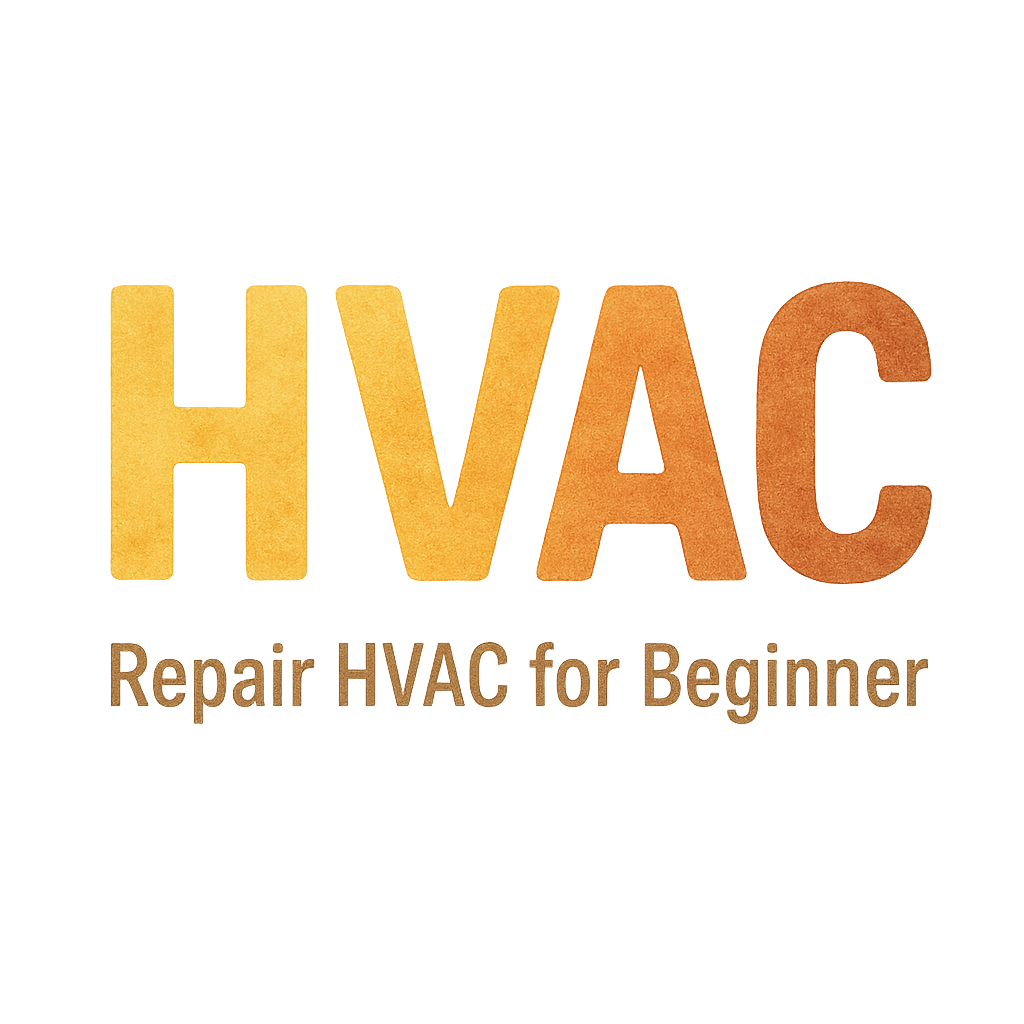Introduction: Why Diagnosing HVAC Problems is Crucial
When your HVAC system starts acting up, it’s not just an inconvenience; it can lead to higher energy bills, poor air quality, and even a complete system failure. If you’re experiencing temperature fluctuations, strange noises, or airflow problems, diagnosing the issue early can save you a lot of time and money. Whether you’re a DIY enthusiast or a homeowner looking to understand HVAC issues better, here’s a guide on how to diagnose your HVAC system like a professional.

Step 1: Understand the Basics of HVAC Systems
Overview of HVAC Components
Before you dive into diagnosing HVAC problems, it’s essential to understand how the system works. HVAC stands for heating, ventilation, and air conditioning. The system works as a whole to regulate your indoor climate. Each part of the system plays a crucial role in ensuring optimal performance. The main components include:
- The Furnace: Provides heating during cold months.
- The Air Conditioner: Cools the air in the warmer months.
- Ductwork: Channels air throughout the home.
- Refrigerant: Vital for the cooling process in air conditioning units.
- Thermostat: Regulates the desired indoor temperature.
A clear understanding of these parts will help you better identify where issues might arise in your system.
The Role of Heating, Ventilation, and Air Conditioning
Your HVAC system is designed to keep your home comfortable year-round. When any part of this system fails, it can affect the temperature, air quality, and comfort of your home. For instance, a malfunctioning furnace can leave you in the cold, while an issue with your air conditioner can make those summer days unbearable.
Step 2: Check for Power Issues
Identify Power Failures and Circuit Breakers
The first thing you should always check when diagnosing HVAC problems is whether the system is receiving power. Sometimes the issue may not be with the HVAC unit itself, but with the power supply. Check your circuit breaker panel to ensure that the HVAC system’s breaker hasn’t tripped.
How to Identify Electrical Failures
If the breaker is on, but the system isn’t turning on, there may be an electrical issue. Look for signs of faulty wiring, a blown fuse, or problems with the power switch. If you’re unsure how to handle electrical issues, it’s always best to call in a professional.
Step 3: Inspect the Thermostat
Why the Thermostat is Crucial to HVAC Functionality
The thermostat is the brain of your HVAC system. If it’s malfunctioning, your heating or cooling efforts may be inefficient or even non-existent. A faulty thermostat can lead to your HVAC system running constantly or not starting at all.
Signs of a Faulty Thermostat
Common signs of a broken thermostat include:
- The system doesn’t respond to temperature changes.
- It runs continuously, even when the desired temperature is reached.
- It displays incorrect temperatures.
How to Test and Recalibrate the Thermostat
First, check the thermostat’s settings. If it’s on the wrong mode (heating or cooling), adjust it accordingly. You can also recalibrate the device by removing it from the wall and adjusting the temperature manually. If recalibration doesn’t work, you may need to replace the thermostat.
Step 4: Examine the Air Filters
The Importance of Clean Air Filters
Air filters trap dust, dirt, and debris, keeping them out of the air circulating through your home. When they become clogged, airflow is restricted, causing your HVAC system to work harder and less efficiently.
How Clogged Filters Affect HVAC Efficiency
A clogged filter can cause your system to overheat, reduce air quality, and increase energy consumption. If your filter is visibly dirty or hasn’t been changed in months, it’s time for a replacement.
Replacing and Cleaning Air Filters
Air filters should be replaced regularly—every 1-3 months, depending on usage. Be sure to select the correct size and type of filter for your system. For more guidance, check out our HVAC maintenance guide.
Step 5: Check the Ductwork
The Role of Ductwork in Airflow and Heating/Cooling Efficiency
The ductwork in your home plays a vital role in delivering air to every room. If the ducts are clogged, damaged, or leaking, airflow will be restricted, and your system will lose efficiency.
Identifying Duct Leaks and Blockages
Inspect the ductwork for visible signs of damage, such as holes or disconnections. You can also listen for whistling sounds, which can indicate leaks. A duct sealing kit can be used to patch any leaks temporarily.
How to Inspect and Seal Leaky Ducts
Use a flashlight to inspect hard-to-reach areas of the ducts. If you find leaks, seal them with specialized duct tape or sealant designed for HVAC systems. For a step-by-step guide on this process, see our HVAC troubleshooting tips.
Step 6: Investigate the Refrigerant Levels
How Refrigerant Impacts Cooling Performance
Refrigerant is essential for the cooling process in air conditioning systems. Low levels of refrigerant will result in insufficient cooling, even when the system is running.
Signs of Low Refrigerant Levels
If your air conditioner is blowing warm air or freezing up, the refrigerant may be low. It’s crucial to check the levels and recharge if necessary.
How to Recharge Refrigerant Safely
If you’re comfortable doing so, you can recharge the refrigerant yourself, but it’s generally best to hire a professional. Handling refrigerants improperly can cause damage to the system or even result in injury. For more tips on safe handling, see our repair safety guide.
Step 7: Examine the Condenser and Evaporator Coils
Importance of Clean Coils for HVAC Efficiency
Condenser and evaporator coils are responsible for heat exchange during cooling. Over time, they can become dirty or covered with debris, hindering their ability to operate efficiently.
How Dirty Coils Impact System Performance
Dirty coils can cause your system to overheat or fail to cool the air properly, making the system work harder and reducing its lifespan.
Cleaning the Condenser and Evaporator Coils
To clean the coils, turn off the power, remove any visible debris, and use a soft brush or coil cleaner to clean the surfaces. Be sure to follow manufacturer instructions to avoid damage. For further details, refer to our maintenance and cleaning checklist.
Step 8: Inspect the Compressor
Role of the Compressor in Cooling Systems
The compressor is responsible for circulating refrigerant through the system. If the compressor is malfunctioning, the entire cooling process will be affected.
Common Compressor Issues
Listen for unusual sounds or notice if the system isn’t cooling effectively. If you suspect a compressor issue, it’s best to call in a professional, as replacing or repairing a compressor can be costly.
How to Check if the Compressor is Working Properly
Check the power supply and any fuses connected to the compressor. If there’s power but the system still isn’t working, the compressor may need professional repair or replacement.
Step 9: Evaluate the Drainage System
The Role of Drainage in Preventing Moisture Damage
HVAC systems rely on a drainage system to remove excess moisture created during cooling. A clogged drain line can cause water damage, mold growth, and poor system performance.
How to Check for Clogged Drain Lines
Inspect the condensate drain line and ensure it’s clear of debris. Use a wet/dry vacuum to suck out any blockages.
Fixing Blocked Drains and Ensuring Proper Water Flow
Once the line is cleared, flush it with a mixture of water and vinegar to prevent future clogs and algae growth. For more on system maintenance, check out our monthly care guide.
Step 10: Test the HVAC System’s Overall Performance
How to Run a Full Diagnostic Test
Once you’ve inspected all the components, it’s time to run a full system test. Turn on the HVAC system and monitor its performance, checking for any unusual noises, temperature inconsistencies, or leaks.
Monitoring Performance and Identifying Potential Failures
If the system is still having trouble, it may be time to contact a professional HVAC technician for a more in-depth analysis and repair. For troubleshooting help, refer to our repair tips.
Conclusion
Diagnosing HVAC issues like a pro requires a bit of patience and a systematic approach. By following these 10 steps, you’ll be able to pinpoint problems, potentially saving you time and money on repairs. Regular HVAC maintenance and timely diagnostics can extend the life of your system and improve its efficiency.


